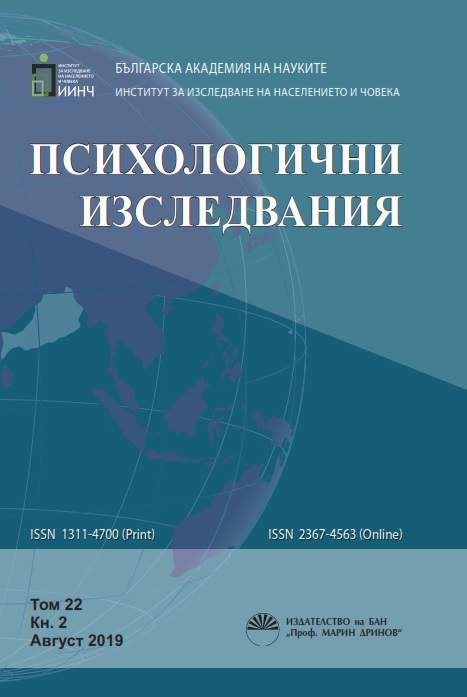Измерения на привързаността иличностни диспозиции: концептуални връзки и различия
Attachment dimensions and personality dispositions: conceptual associations and differences
Author(s): Daniel PetrovSubject(s): Social Sciences, Psychology
Published by: Институт за изследване на населението и човека - Българска академия на науките
Keywords: adult attachment; dispositional models; personality psychology.
Summary/Abstract: John Bowlby argued that children’s dispositions play a role in their responses to the environment but the most crucial determinant of future interpersonal behavior is the quality of interactions with attachment figures. The objective of the study was to examine the relationships between attachment dimensions (Anxiety and Avoidance) and Big Five personality dispositions (Extraversion, Neuroticism, Agreeableness, Openness, Conscientiousness). Self-report methods that used lexical approach to personality and psychosocial model of adult attachment were administrated to a sample of 168 subjects (age 16-55 years). Conceptual similarities and differences were examined using correlational analysis and regression equations predicting attachment dimensions from Big Five personality traits. Attachment Anxiety was most strongly related to Neuroticism and negatively related to Conscientiousness. Attachment Avoidance was related only to low Agreeableness. Regression analysis revealed that the strongest Big Five predictor of Attachment Anxiety was Neuroticism, followed by Agreeableness, low Conscientiousness and Introversion. Attachment Avoidance was predicted only by low Agreeableness. None of attachment dimensions were correlated with Openness. The two conceptual units of analysis from different psychological traditions were associated in theoretically meaningful ways. They do not overlap because personality dispositions account for less than half of the variance in each attachment dimension. The results are discussed in order to give more detailed understanding of individual differences, attachment insecurity, personality stability and change, consistency in behavior and adjustment.
Journal: Психологични изследвания
- Issue Year: 22/2019
- Issue No: 2
- Page Range: 351-364
- Page Count: 14
- Language: Bulgarian

